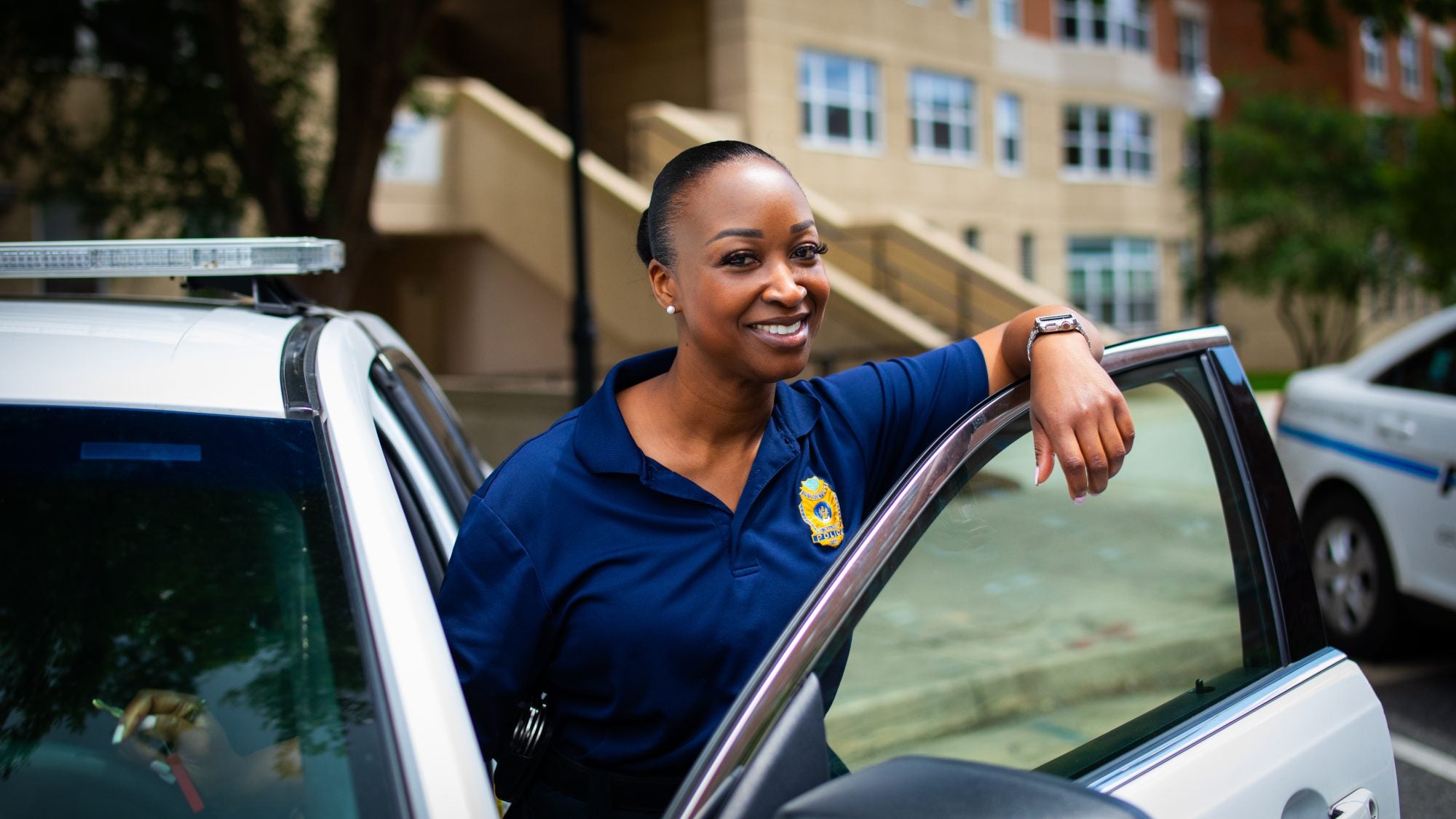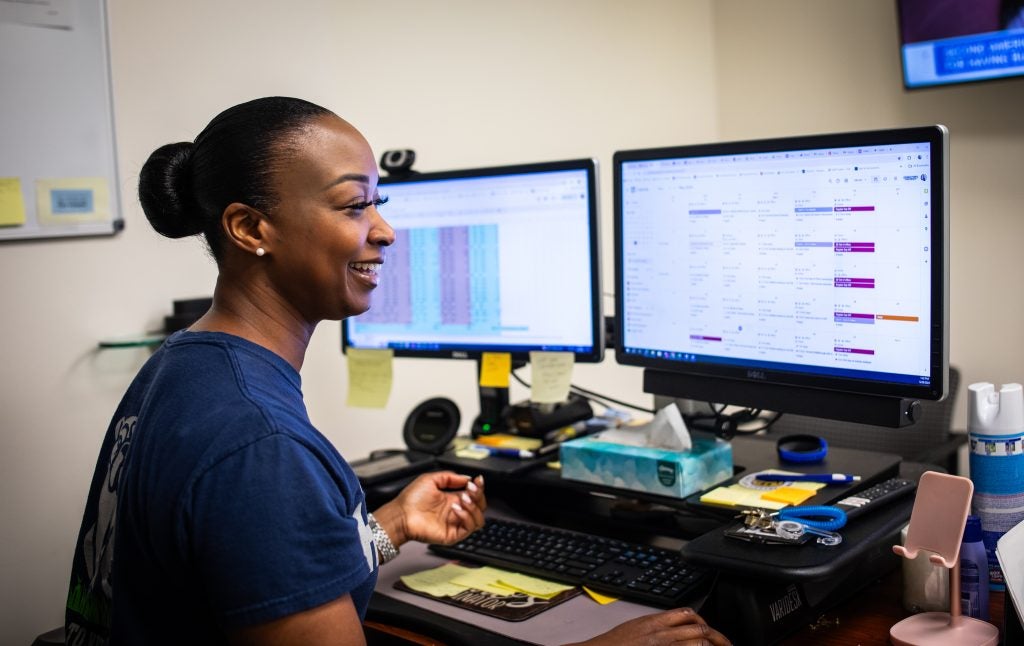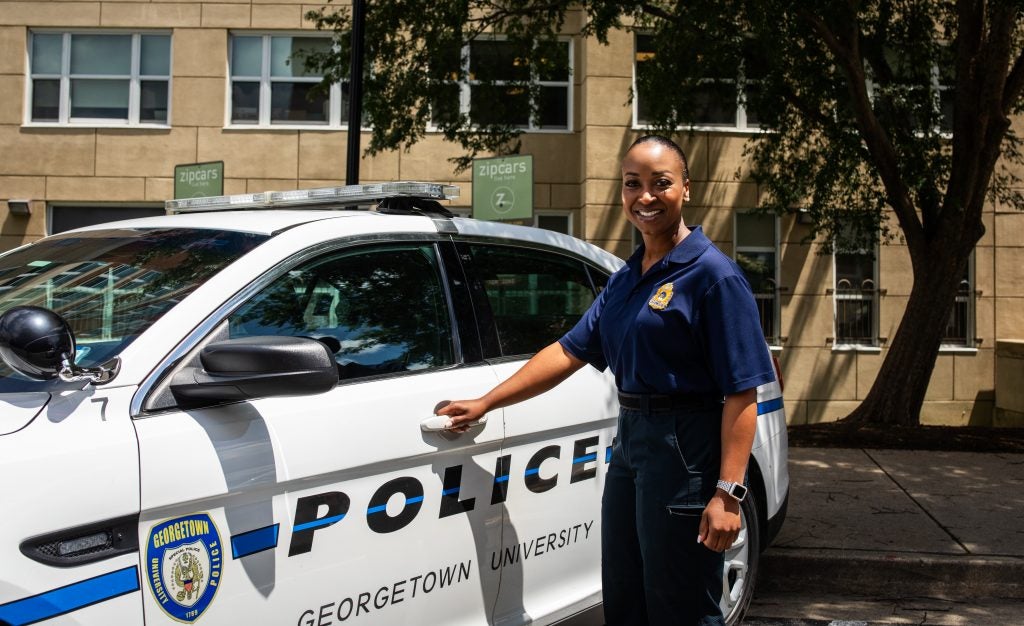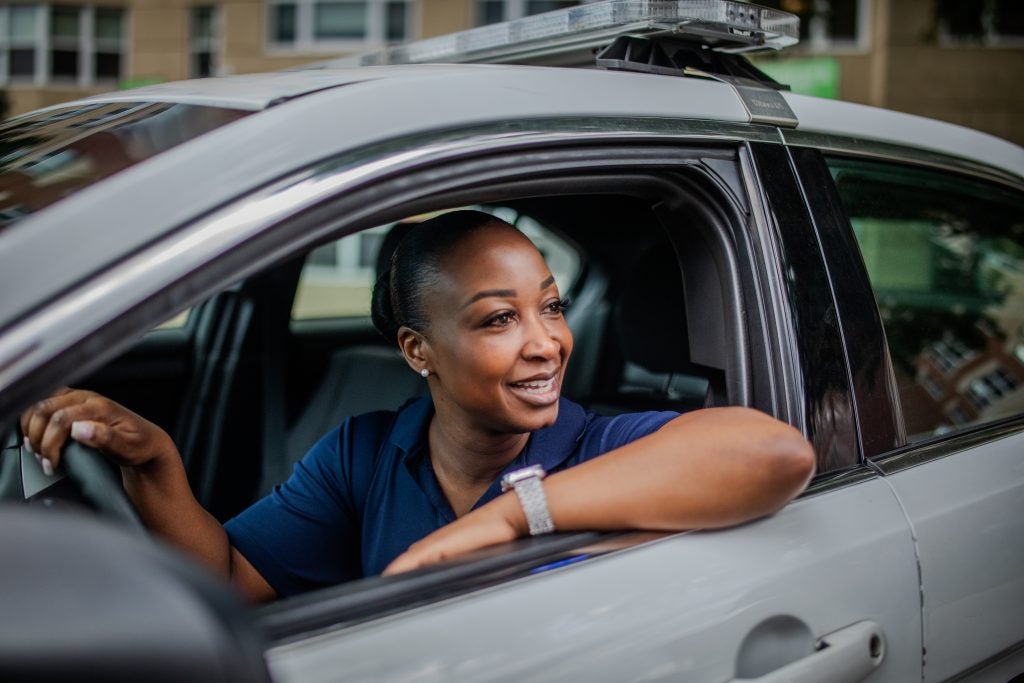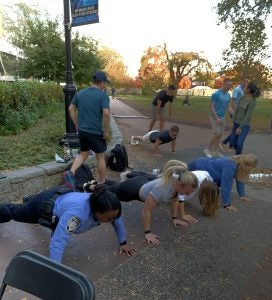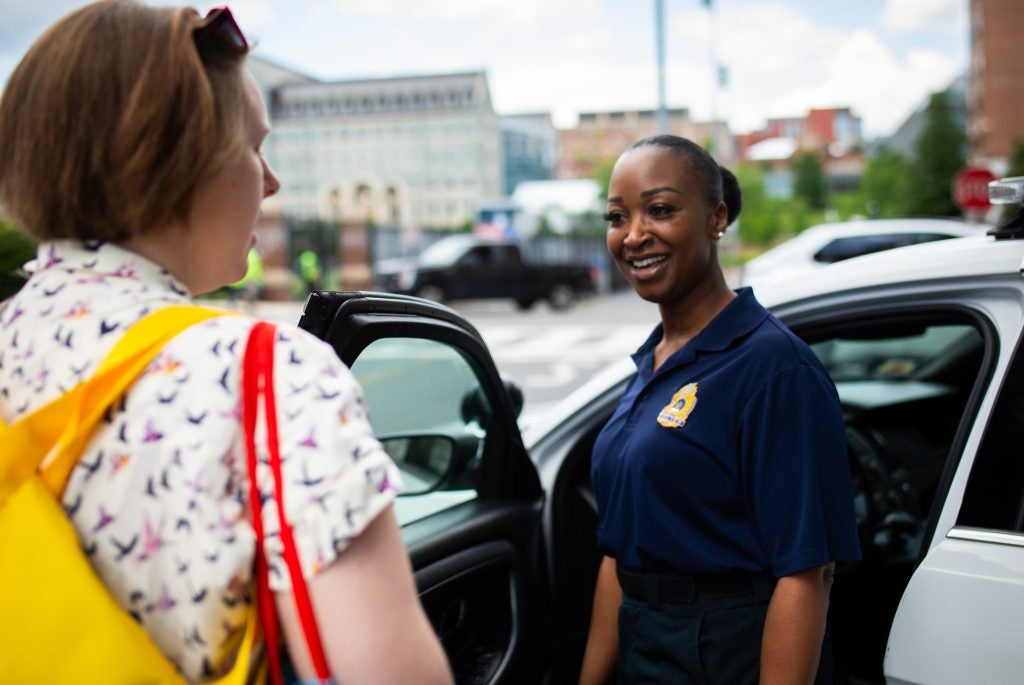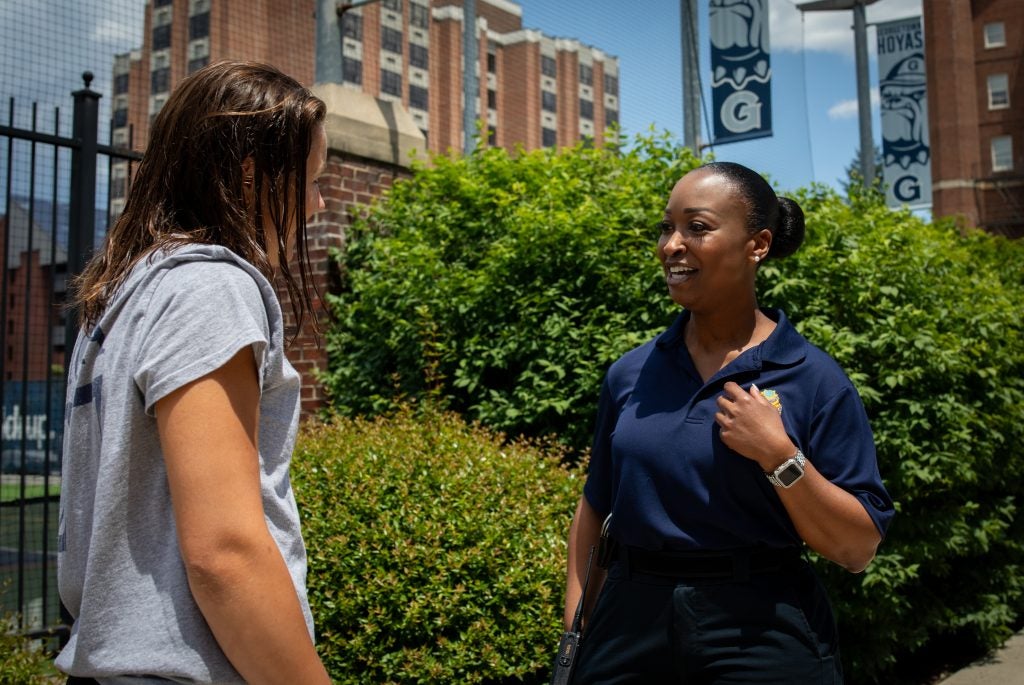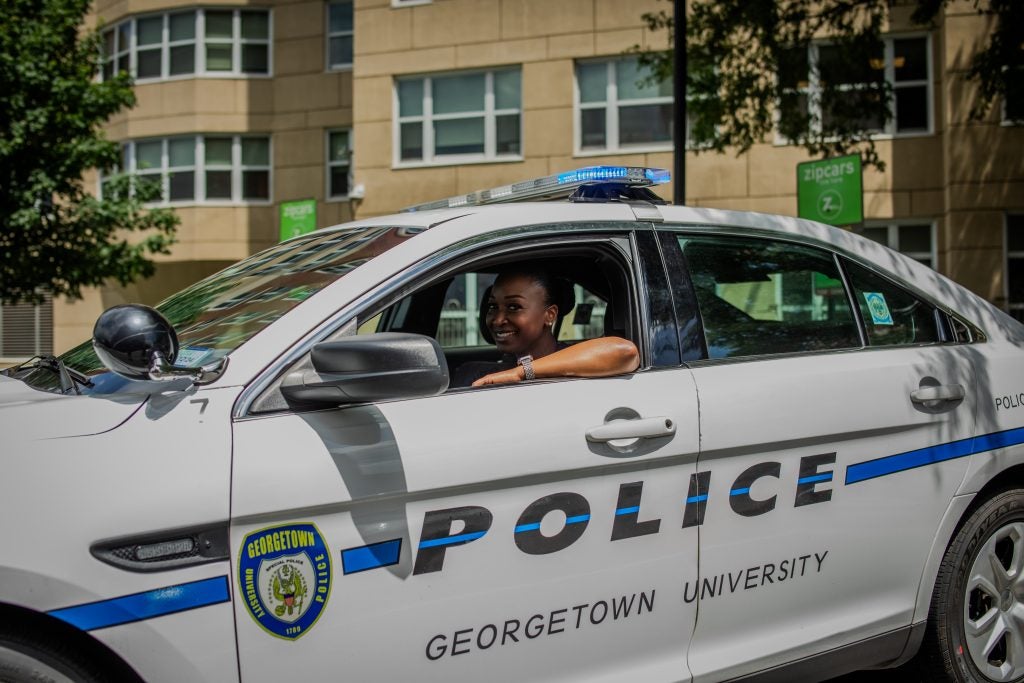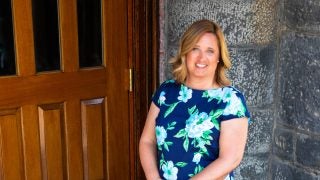This story is part of Georgetown Faces, a storytelling series that celebrates the beloved figures, unsung heroes and dedicated Hoyas who make our campus special.
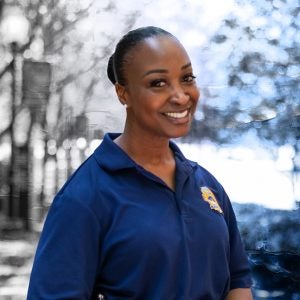
When Lieutenant Joyce Pearson was 15, she visited Washington, DC, for the first time. Her world spun.
“It was my first time seeing homeless people,” the Florida native said. “I was like, I’m going to change this place. I don’t know how, but I’m going to change it. And life laughed at me like ‘no you’re not.’”
Pearson’s aspiration was to become a lawyer in DC, but her path led her into the field of law enforcement.
She worked as a corrections officer in a state prison and as a patrol officer with the Metropolitan Washington Airport Authority. In 2020, she found her way to the Georgetown University Police Department (GUPD), returning to the city where she had always longed to be.
“To come full circle and raise my two daughters here in Arlington, Virginia, collaborate with policymakers and meet presidents — it feels surreal,” she said. “Although my journey didn’t unfold as I envisioned, I’m here, making a meaningful impact.”
Today, Pearson leads GUPD’s community engagement unit, partnering with the DC government on events like commencement and local stakeholders and businesses, as well as attending monthly public safety meetings with students. She also collaborates with the Metropolitan Police Department and community members on initiatives like coat drives, National Night Out, and faith-based events. And she juggles managing GUPD’s event scheduling, budgeting expenses and invoices, overseeing the coordinator of the Sexual Assault Response Team (SART), and supervising the manager of GUPD’s Student Guard program, among others.
